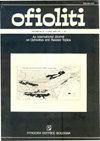Investigation of silicate micro-inclusions from Orhaneli and Harmancik chromitites (NW Turkey): new ultrahigh-pressure evidence from Western Tethyan ophiolitic chromitites
IF 1.3
4区 地球科学
Q2 GEOLOGY
引用次数: 4
Abstract
In this study, mainly silicate and some sulfide micro-inclusions hosted in magnesiochromites of chromitites from Orhaneli Ophiolite Complex and Harmancik Peridotites in northwestern Turkey are studied. Existence of randomly distributed anhedral (globular), selectively oriented lamellar/needle-shaped silicate micro-inclusions and several other cubic/octahedral inclusions hosted in magnesiochromites are noted along with Ir-group platinum-group element (IPGE) bearing phases and base metal sulfides (BMS). The microscopic observations, Raman, electron dispersive and wavelength dispersive spectrometry data have shown that the randomly distributed anhedral (globular) silicate inclusions mainly consist of forsterite and diopside. Selectively oriented lamellar/needle-shaped silicate micro-inclusions are determined as diopsides. Some of the cubic/octahedral inclusions are identified as (cubic) Mg-silicates, while some other inclusions are identified as euhedral to subhedral clinopyroxene and Na-K-Ca and Mg bearing silicates. An important amount of the studied cubic/octahedral inclusions are identified as negative crystals of cubic/octahedral form (some in form of trigonal or macle crystals). The oriented lamellae/needles of diopside are found both in the Orhaneli and Harmancik chromitites. Cubic/octahedral Mg-silicates and negative crystals are only detected in a multi-textured chromitite sample (with dunitic-orbicular, semi-massive and massive textures), which lacks the oriented diopside lamellae/needles. Although no other ultrahigh-pressure (UHP) phases are found, the existence of oriented diopside lamellae/needles in the Orhaneli and Harmancik chromitites are interpreted as the first in-situ evidence of UHP conditions and possibly their deep mantle recycling history. It may be speculated that the occurrence of micro-lamellae/needles of diopside in the Orhaneli chromitites within the cumulate dunites result from entrapment of recycled relics of UHP chromitites within the upwelling primordial melts that replenished the evolved magmas ponding in the MTZ. A step-by-step textural interpretation of the multi-textured Harmancik chromitite sample also suggested at least two stages of chromite formation, the former represented with the tightly packed nodular chromite nuclei within the dunitic orbicules, and the latter with surrounding semi-massive to massive (tightly packed) chromitites. The former stage can clearly be traced to be finally incorporated within the latter. The cubic/octahedral Mg-silicates and negative crystals are both seen within the first stage chromitite nuclei of the dunitic orbicules and the second stage surrounding chromitite. Occurrences of these inclusions are also questioned for a possible link between the textural evolution of chromitite and the UHP processes, and possibilities for finding a field (macroscopic) evidence for discriminating UHP chromitites. Due to some conflicting findings, it is concluded that more data are needed for reaching a final decision.Orhaneli和Harmancik铬铁矿(土耳其西北部)硅酸盐微包裹体的研究:来自特提斯西部蛇绿质铬铁矿的新超高压证据
本文研究了土耳其西北部Orhaneli蛇绿岩杂岩和Harmancik橄榄岩铬铁矿中镁铬铁矿中主要含硅酸盐和部分硫化物微包裹体。镁铬铁矿中存在随机分布的四面体(球状)、选择性取向的片层状/针状硅酸盐微包裹体和几种立方/八面体包裹体,同时还存在含ir -族铂族元素(IPGE)相和碱性金属硫化物(BMS)。显微观察、拉曼光谱、电子色散光谱和波长色散光谱数据表明,随机分布的四面体(球状)硅酸盐包裹体主要由橄榄石和透辉石组成。选择性取向的层状/针状硅酸盐微包裹体被确定为透辉石。部分立方/八面体包裹体被鉴定为(立方)镁硅酸盐,部分包裹体被鉴定为自面体至亚面体斜辉石和含Na-K-Ca和Mg的硅酸盐。大量被研究的立方/八面体包裹体被鉴定为立方/八面体形式的负晶体(一些是三角形或macle晶体)。在Orhaneli和Harmancik铬铁矿中均发现透辉石取向片/针状物。立方/八面体镁硅酸盐和负晶仅在多织构的铬铁矿样品中检测到(具有双圆、半块状和块状织构),缺乏取向透辉石片/针。虽然没有发现其他超高压(UHP)相,但在Orhaneli和Harmancik铬铁矿中定向透辉石片/针状物的存在被解释为UHP条件及其深部地幔再循环历史的第一个原位证据。可以推测,在堆积的黑砾岩中,奥哈内利铬铁矿中透辉石微片/针状物的出现,是由于超高压铬铁矿的再循环遗迹被包裹在上涌的原始熔体中,补充了MTZ演化的岩浆池。对多结构的Harmancik铬铁矿样品的逐步结构解释也表明,铬铁矿的形成至少有两个阶段,前一个阶段是在双晶圆内紧密排列的球状铬铁矿核,后一个阶段是在半块状到块状(紧密排列的)铬铁矿周围。前一个阶段可以清楚地追溯到最后并入后一个阶段。立方/八面体镁硅酸盐和负晶均出现在双晶圆的第一阶段铬铁矿核内,第二阶段在铬铁矿周围。这些包裹体的出现也被怀疑是铬铁矿的结构演变与超高压过程之间的可能联系,以及寻找鉴别超高压铬铁矿的现场(宏观)证据的可能性。由于一些相互矛盾的发现,结论是需要更多的数据才能做出最终决定。
本文章由计算机程序翻译,如有差异,请以英文原文为准。
求助全文
约1分钟内获得全文
求助全文
来源期刊

Ofioliti
地学-地质学
CiteScore
2.40
自引率
7.70%
发文量
1
期刊介绍:
Since 1976, Ofioliti provides an international forum for original contributions and reviews in the field of the geodynamics, petrology, geochemistry, biostratigraphy, stratigraphy, tectonics and paleogeography applied to ophiolitic terrains and modern oceanic lithosphere, including their sedimentary cover. Studies of topics such as geodynamics of the mantle, the evolution of orogens including ophiolites and paleoceanography are also welcome
 求助内容:
求助内容: 应助结果提醒方式:
应助结果提醒方式:


